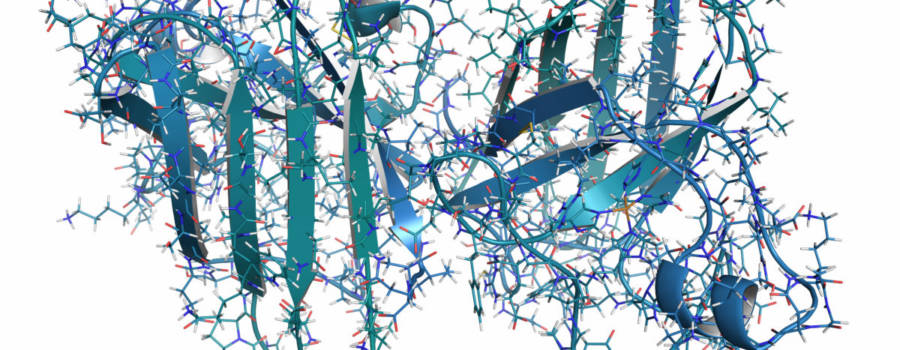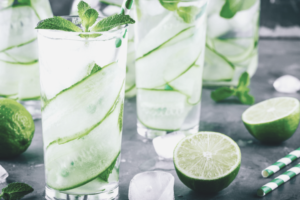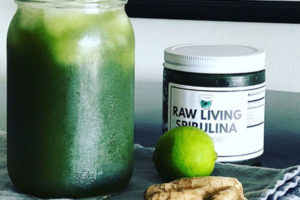Spirulina contains one of the best antioxidants you could give your body –
Considered to be quite possibly the most powerful antioxidant our body creates, superoxide dismutase (SOD) is an enzyme found in almost all living cells. To really understand how this enzyme works in your body, you need to understand the negative effects of free radicals and oxidative stress.
Oxidative stress occurs when there is an imbalance between the production of free radicals and the body’s ability to defend or detoxify their harmful effects. If you are familiar with free radicals at all, you are probably aware of their damage potential. They are thought to be a contributing factor to a number of diseases including atherosclerosis, stroke, and arthritis.
A free radical is an especially reactive atom or group of atoms that has one or more unpaired electrons. If you remember your high school chemistry, you will remember that electrons come in pairs. When one electron is lost from that pair, it makes the atom “highly reactive” as it looks to replace that lost electron anywhere it can. In your body, those replacement electrons come from cells in your body–destroying those cells in the process. Your body is constantly replacing and repairing cells damaged by free radicals; but with the way we live and abuse ourselves, our bodies are bombarded with more free radicals than they can handle.
By supplementing with antioxidants, we help our bodies keep up with the carnage, and it is even possible to reverse some of that damage.
So what are antioxidants? Antioxidants, quite simply, are compounds that render free radicals harmless and stop the chain reaction formation of new free radicals.
The reason spirulina is so powerful to fight oxidative stress is the impressive list of pigments that it contains:
▪ carotenoids and Beta-carotene,
▪ chlorophyll,
▪ phycocyanin,
▪ superoxide Dismutase,
▪ xanthophylls,
Many scientists believe that free radicals are the major villain in both aging and the diseases associated with aging. The amount of cells destroyed over the years by free radicals is enormous. Free radicals literally “eat away” the major organs of the body.
What does it mean? Simply that, if you eat spirulina every day, you will reduce the damages from oxidative stress. And we all know how this can help with aging.
The use of antioxidant supplements at a maintenance level may provide the ultimate defense against premature aging and a compromised immune system. At therapeutic levels, antioxidants may actually play a significant role in reversing many of the effects of aging and disease.
One harmful free radical in particular is the superoxide radical (O2-). It is produced as a byproduct of oxygen metabolism and causes many types of cell damage. Most notably, the superoxide radical attacks cell mitochondria. When mitochondria are destroyed, the cell loses its ability to convert food to energy. It dies. In fact, superoxide may contribute to the development of many diseases (the evidence is particularly strong for radiation poisoning and hyperoxic injury), and perhaps also to aging via the oxidative damage that it inflicts on cells.
Superoxide dismutase (SOD) is an enzyme that repairs cells, reduces cellular damage, and facilitates the breakdown of the toxic superoxide radical into either ordinary molecular oxygen (O2) or hydrogen peroxide (H2O2). Hydrogen peroxide is also damaging, but less than the superoxide radical, and it is also degraded by catalase. SOD works along with glutathione to neutralize reactive oxygen molecules in the body. As such, it provides the cells in the body with important antioxidant defense … 3,500 times more powerful than Vitamin C.
SOD also works in the cytoplasm of the cell to prevent the hydroxyl radical from attacking enzymes, proteins, and the unsaturated fats in cell membranes. SOD is an extremely efficient enzyme; it catalyzes the neutralization of superoxide nearly as fast as the two can diffuse together spontaneously in solution.
In addition to helping eradicate free radicals, SOD has been used to help with:
• wrinkles,
• rebuilding tissue
• extending the length of life
• treating pain and swelling (inflammation)
• interstitial cystitis
• gout
• poisoning caused by a weed-killer called paraquat
• cancer
• lung problems in newborns.
• improving tolerance to radiation therapy
• lowering rejection rates in kidney transplantation
• minimizing heart damage caused by heart attacks.
As such, researchers have been studying the potential of superoxide dismutase as an anti-aging treatment, since it was discovered that SOD levels drop as we age, at the same time free radical levels increase.
How SOD protects body cells:
Since oxygen free radical is toxic, nearly all living things that use oxygen contain different forms of Superoxide Dismutase enzyme. SOD is a very efficient enzyme. It neutralizes oxygen-free radicals nearly as fast as the two can spread together spontaneously in solution.
Researches showed that SOD helps to protect many types of cells from free radicals attack. This is an important factor in prolonging aging and preventing diseases caused by aging. SOD also protects cells from:
DNA damage
ionizing radiation damage
protein damage
lipid damage
Among all living organisms, human has the highest SOD concentration. Therefore, in theory, we can live up to 125 years old. But usually, when you reach 40 years old, your Superoxide Dismutase enzymes are only left half.
This is because our environment is much polluted with:
air pollution
water pollution
and even Electromagnetic Field pollution
Working stress, unhealthy diet, and lifestyle also create a lot of free radical stress that harms your body. So you use up most of your SOD before you reach 100 years old.
Reducing the SOD level is one of the reasons we experience rapid health decline after 40 years old. In our 20s and 30s, we don’t feel much difference in health. Once we enter our 40s, some health problems begin to appear.
Increasing your levels of SOD has a powerful impact on how long you live, even if you have other risk factors.
A small number of little-known aging studies found that animals that produce the highest levels of SOD have the longest life spans. When they genetically engineered fruit flies to produce double the amount of this super enzyme, the fruit flies lived twice as long!
SOD makes every cell in your body more resilient and able to fight off attacks better from the outside. No other antioxidant — not carotenoids … nor flavonoids … nor Vitamins A, C, and E … nor CoQ10 … and not even Glutathione Peroxidase and Catalase — even comes close to the power of SOD.
SOD safeguards your DNA, the blueprint your body uses to build every organ, tissue, and cell in your body.
In a randomized, placebo-controlled study, researchers exposed two groups of people to high-pressure oxygen. The result was oxidation, which is similar to what happens when you slice an apple and leave it exposed to the air for an hour. The oxygen causes the apple to turn brown and eventually spoil. In the body, this oxidation process happens to the cellular membranes and their DNA, wearing out the cells, and eventually causing aging.
In the study, the control group’s delicate strands of DNA broke. But in the group taking the new SOD, their cellular membranes remained virtually intact and there was no breakage in the DNA strands.
SOD supports your immune system and safeguards your DNA in a way that fights off the devastating forces of aging.
Knowing this, one might be inclined to run to the nearest health food store to buy a Superoxide Dismutase supplement. But there’s actually much more to it than that.
Here’s why:
SOD is such a fragile molecule, and as such, it is impossible for us to get it in synthetic supplementation form through our digestive system. Ongoing research has shown that:
• Supplemental SOD is destroyed in the stomach.
• Oral supplementation of SOD does not increase
• tissue SOD activity.
• A small percentage of SOD supplementation can be placed in the intestinal tract but cannot get past the gastrointestinal (GI) barrier.
The answer is to obtain bioactive SOD and the only place you can get it from is in living foods such as Raw Living Spirulina.






Recent Comments